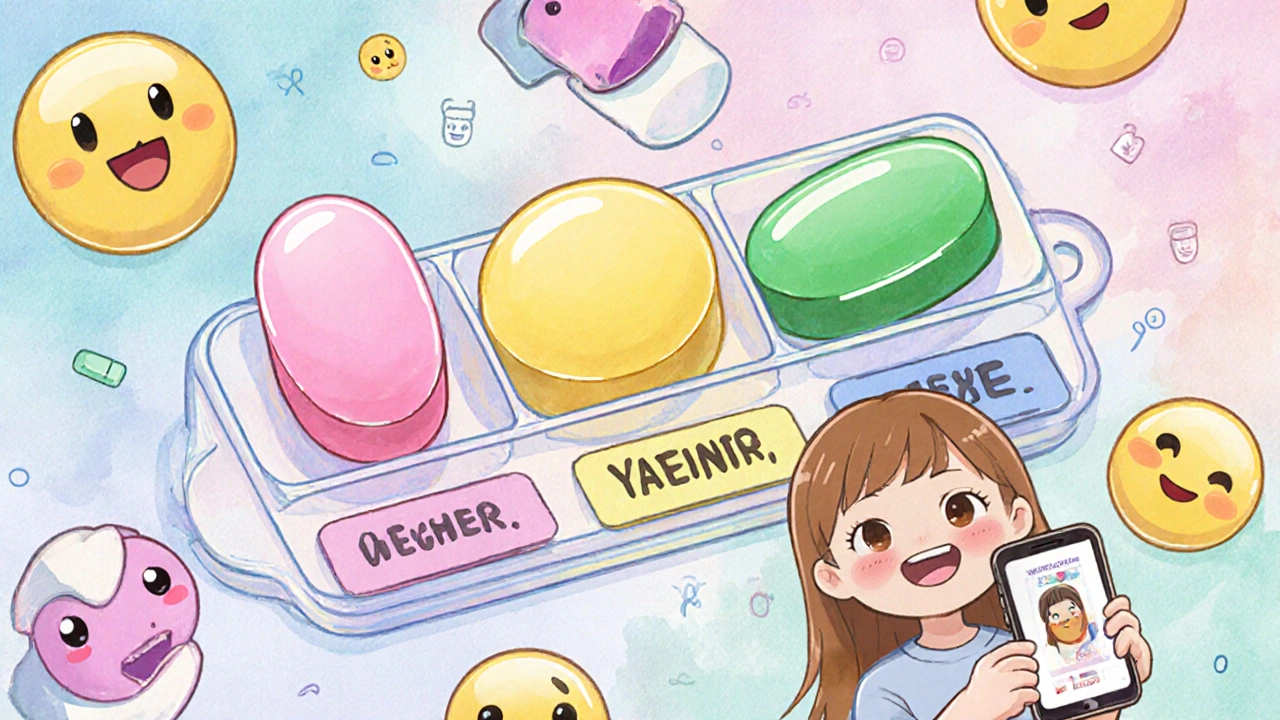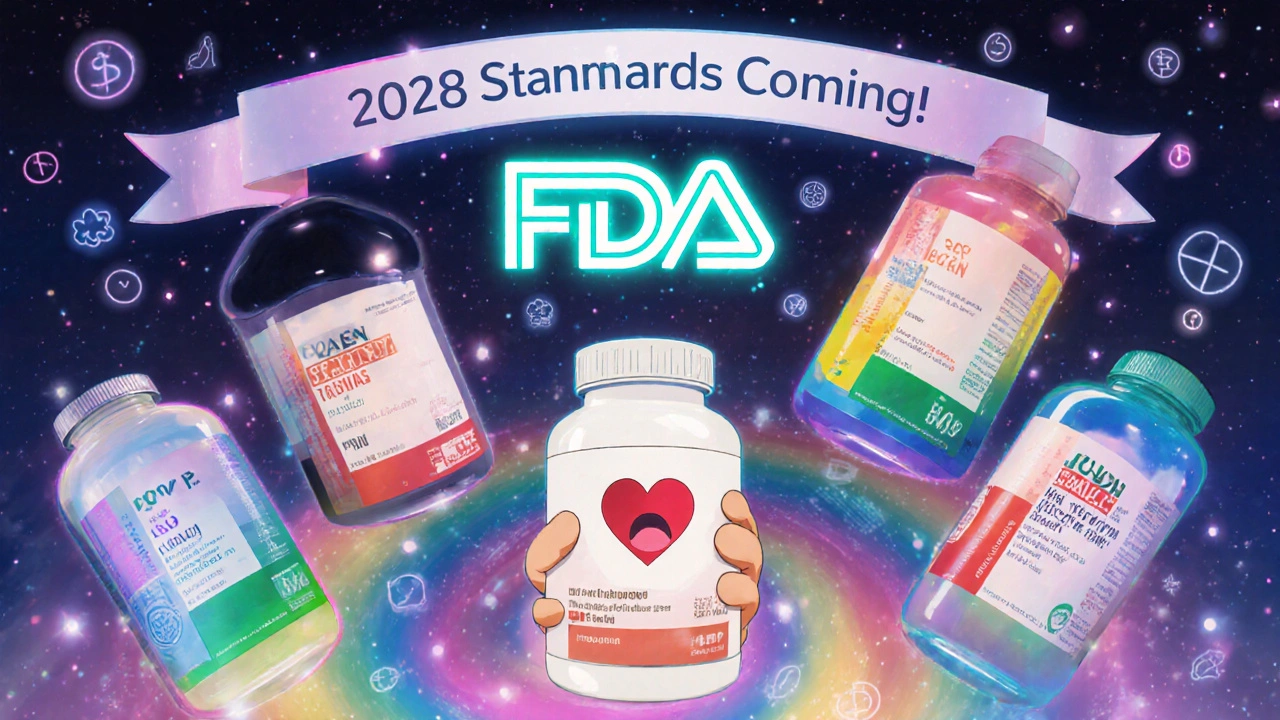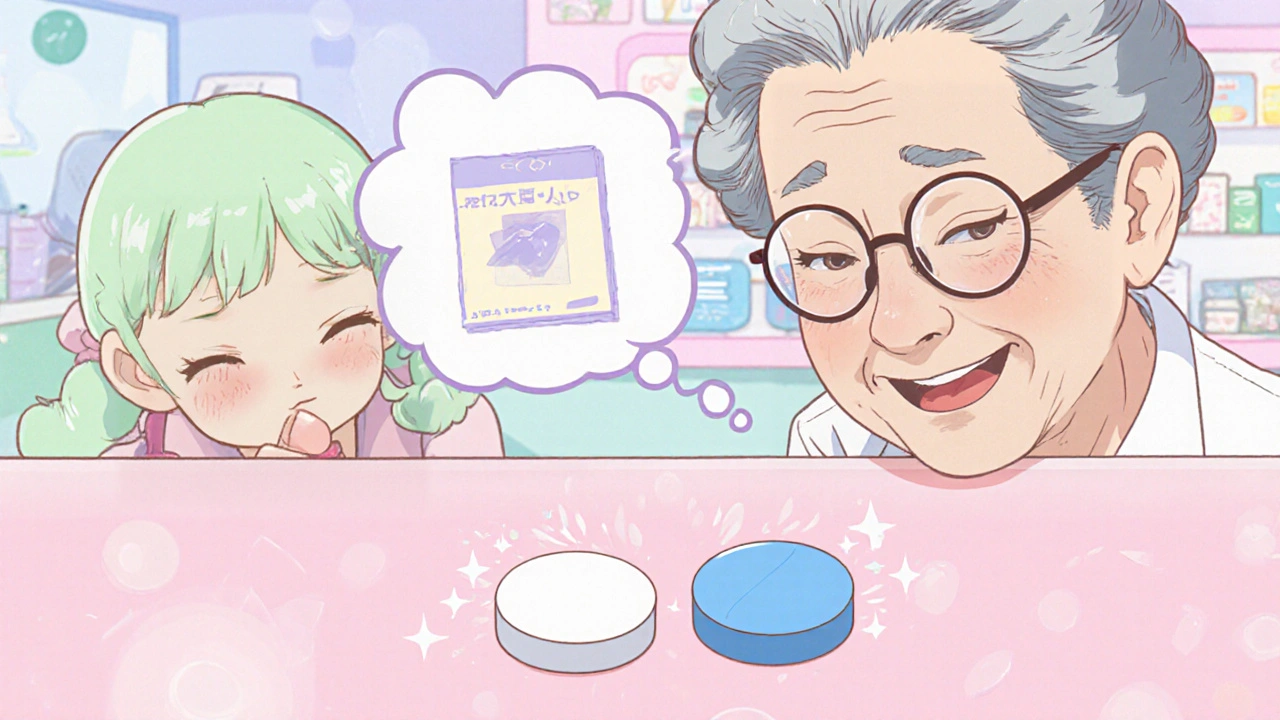Ever opened your pill bottle and stared at a tablet that looked nothing like the one you took yesterday? It’s not a mistake. It’s not a mix-up. It’s just how generic drugs work.
If you’re on a long-term medication-say, for high blood pressure, diabetes, or cholesterol-you’ve probably seen this happen. One month, your pill is a small white oval. The next, it’s a large blue round tablet. The logo on it changed. The size shifted. The color? Totally different. You might’ve even skipped a dose because you were scared it wasn’t the right medicine. You’re not alone. And this isn’t just about confusion-it’s a real safety issue.
Why Do Generic Pills Look So Different?
The reason comes down to U.S. trademark law, not medicine. Under the Hatch-Waxman Act of 1984, generic drug makers can’t copy the exact look of brand-name pills. Even if the active ingredient is identical, the color, shape, size, and markings must be different. This rule exists to protect the brand’s intellectual property, not to make your life harder.
So, a brand-name pill like Lipitor (atorvastatin) is pink and oval. But your generic version? It could be white and round, or pale yellow and oblong-depending on which company made it that month. And if your pharmacy switches suppliers? Your pill changes again. No warning. No explanation. Just a different-looking tablet in your hand.
It’s Still the Same Medicine-But That Doesn’t Matter
The FDA says generics are bioequivalent. That means they deliver the same amount of active ingredient into your bloodstream at the same rate as the brand name. That’s the science. And it’s true. Generics work.
But here’s the problem: your body doesn’t care about bioequivalence. Your brain does. When you’ve been taking a white oval pill for three years, your brain ties that shape and color to the idea of “my medicine.” Change the look, and your brain says, “Something’s wrong.”
Harvard researchers studied over 38,000 people taking heart meds. When the pill’s appearance changed, those patients were 34% more likely to stop taking their medicine altogether. That’s not because the drug stopped working. It’s because they didn’t recognize it. And when you stop your meds, your blood pressure spikes. Your blood sugar goes wild. Your risk of a heart attack or stroke goes up.
Who Gets Hit Hardest?
Older adults are the most affected. A 2022 survey by AARP found that 37% of people over 65 struggled to recognize their meds after a change. That’s nearly four in ten. Why? Many take five, six, even ten pills a day. They don’t read labels. They rely on sight. A blue pill today might be a red one tomorrow. A round one might become oval. They mix them up. They skip doses. They panic.
But it’s not just seniors. A 2023 Healthgrades survey showed that nearly 15% of all patients admitted skipping doses because their generic looked different. One Reddit user wrote: “My blood pressure med changed from white oval to blue round. I almost didn’t take it-I thought it was something else. Scared me half to death.” That’s not an exaggeration. That’s everyday reality.

Pharmacists Know This Is a Problem
Pharmacists are on the front lines. The American Pharmacists Association reports that nearly 1 in 5 generic refills trigger complaints about appearance changes. Most of those complaints come from people over 65. And it’s not just about confusion-it’s about trust. If your pill looks different every time, you start wondering: Is this even the same drug? Is it safe? Did they give me the wrong thing?
Some pharmacies are trying to fix it. They use pill identification cards from the FDA. They show patients photos of their meds in the system. They ask, “Did you notice the change?” But only about 43% of pharmacies use these tools regularly. Most don’t have the time, training, or resources.
What You Can Do Right Now
You don’t have to accept this as normal. Here’s what actually works:
- Take a photo of your pill the first time you get it. Keep it in your phone. When it changes, pull up the photo and compare. This simple step cuts medication errors by 27% in older adults, according to Johns Hopkins.
- Ask your pharmacist which manufacturer made your pill. Write it down. Next refill, ask if it’s the same one. If not, ask if you can stick with the same brand. Some insurers let you choose, even if it costs a little more.
- Use a pill organizer with labeled compartments. Don’t just dump pills in. Put each one in its own slot with the name and time written on the lid. It forces you to look at them.
- Keep a written list of every medication: name, dose, color, shape, markings. Update it every time your pill changes. Bring it to every doctor visit.
- Don’t be afraid to speak up. If you’re confused, say so. Ask: “Is this the same medicine?” If your pharmacist shrugs, ask to talk to your doctor. Your safety matters more than pharmacy logistics.

Why Doesn’t the FDA Fix This?
The FDA knows this is a problem. In 2016, they released guidance telling generic makers to think about pill appearance when designing products. In 2023, they launched a new initiative to create “Visual Medication Equivalence Standards.” They’re even spending $4.7 million on research.
But they’re stuck. The law says generics can’t look like brand-name drugs. And they can’t look like other generics either. So every time a new company enters the market, they have to invent a new color and shape. That’s why you might see five different versions of metformin in your pharmacy-each one a different color, size, or marking.
Europe doesn’t have this problem. The European Medicines Agency requires generics to match the look of the original when possible. The result? Fewer errors. Fewer missed doses. Better outcomes.
What’s Changing in 2025?
Good news: things are starting to shift. By 2028, 75% of new generic approvals for high-risk drugs (like blood thinners, thyroid meds, or seizure drugs) will likely include standardized appearances. That’s up from just 32% in 2023.
Why now? Because the cost of ignoring this is too high. The generic drug industry saves the U.S. healthcare system over $100 billion a year. But medication errors and non-adherence from appearance changes cost $1.3 billion annually in hospital visits, ER trips, and complications.
It’s not about money. It’s about people. And that’s finally starting to matter.
Final Thought: Your Pill Isn’t Just a Chemical
Medications aren’t just science. They’re habits. They’re routines. They’re trust. When your pill changes color, it doesn’t just look different-it feels different. And when it feels wrong, you stop taking it.
Don’t let a trademark law steal your health. Know your pills. Track them. Ask questions. Demand consistency where you can. And if you’re ever unsure? Call your pharmacist. Don’t guess. Don’t assume. Your life depends on getting the right medicine-every single day.



Comments
My mom used to skip her blood pressure pills every time the color changed. She’d call me panicked, thinking she’d been poisoned. Took me months to get her to take photos of each new pill. Now she’s fine. Just a little extra effort saves lives.
This isn’t just about pills-it’s about how we treat human beings in systems designed for profit, not people. We reduce medicine to a logo and a shape, then wonder why people stop taking it. The body doesn’t need consistency. But the soul? The soul needs to feel safe. And if your medicine doesn’t look like the one you trust, you don’t feel safe. Fix the system, not the patient.
Wow. So the FDA lets drug companies play Tetris with pill colors so Pfizer can keep its pink oval trademark. Meanwhile, grandmas are tossing meds because they ‘look weird.’ 🤦♂️ I mean, sure, I get IP law-but this is like changing the logo on your toothpaste every month and then acting shocked when people stop brushing. At least toothpaste doesn’t keep you from having a stroke.
Why don’t people just read the label? It says the name right there. If you can’t read, get someone to help you. This isn’t hard. Stop blaming the system. People are lazy.
This is all a Big Pharma psyop. They change the pills so you’ll think you’re losing your mind. Then they sell you ‘new improved’ versions that are actually placebos with extra dye. The FDA? Controlled by the same corporations that make the pills. They don’t want you to know your meds are being swapped like trading cards. Look up the 2019 whistleblower report on generic drug contamination-nobody talks about it. They’re poisoning us slowly.
My dad’s on metformin. Took him three refills to stop asking if the blue pill was ‘the real one.’ I started printing out the FDA pill images and taping them to his pill organizer. 📸💊 He still forgets sometimes, but now he doesn’t panic. Just sighs and says, ‘Oh, right. The blue one again.’ Small wins, man. Small wins.
lol who cares if the pill looks diffrent? u just take it. its the same chemikl. u guys are so overreactive. its not like its a diffrent drug. jesus. just dont be so dramtic. 🤷♀️
You think this is bad? Wait till you find out that 78% of generic manufacturers use fillers that aren’t even FDA-approved for long-term use. The color change? That’s just the tip of the iceberg. The real danger is the talc, the cornstarch, the dyes from China that cause micro-inflammation over time. You think your heart’s okay? It’s not. Your kidneys are slowly failing because you trusted a blue oval over a pink one. And the FDA? They’re on the payroll. They’ve known since 2012. That’s why they’re pushing ‘visual equivalence standards’ now-because lawsuits are coming. You’re not just confused. You’re being experimented on. And you’re paying for it every month.